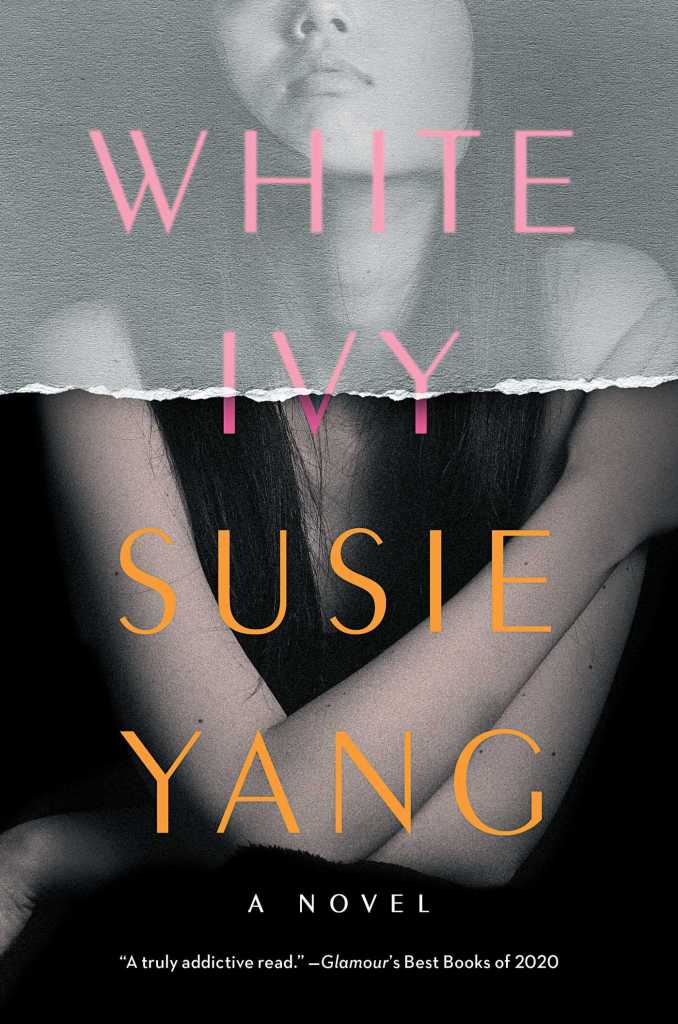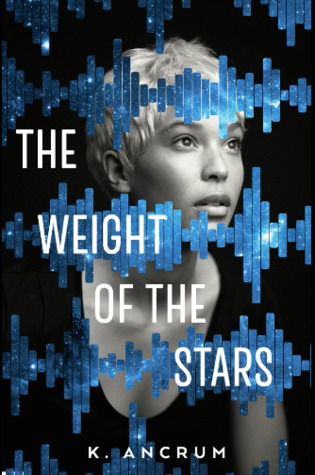Ace Week
As some of you may already know, this week is Ace Week, an annual tradition highlighting identities in the asexual and aromantic communities, which are part of the LGBTQ2S+ spectrum. It’s an important week for me, because although I am allosexual, I identify as nebularomantic, a neurodivergent aromantic identity. What it means is that I can’t (and don’t) emotionally differentiate between types of love like alloromantic neurotypical people do. For me, platonic and romantic love feel exactly the same.

I only began to understand this about myself in 2019. As I began to unpack what that meant for me, while also navigating the unraveling of a close friendship and an abusive partnership, so many things in my life began to make more sense to me. Complicated relationships that I had had from the time I was a child, and often their breakdowns, became so much more simple to parse and understand when I was able to piece together this part of myself. Although I had identified with various other identities in the LGBTQ2S+ community for a long time, I could suddenly identify that my lack of understanding about my nebularomantic identity is the one that has caused me the most pain. My coming into the Ace community was laced with heartbreak, as much as relief. I have come to learn that for so many Ace people, this is often the case.
My wish for Ace Week is that people who do not share identities with the people in the Ace community, especially other queer people, will take the time to learn about what Ace identities are and what they mean to us. Our relationships can look very non-normative, but that doesn’t mean that they aren’t fulfilling and precious and rich with meaning.
…and what better way to learn about identities different from your own than through books?! There are a few places to find these books, since they can be a bit tricky to pin down. First, you can check out the Aromantic and Asexual Characters in Fiction Database, always linked on our resources page. Second, check out this new list of books with asexual main characters, assembled by Fadwa, the rad Moroccan book blogger behind Word Wonders. And last but not least, a specific recommendation: Unburied Fables. This independently published short story collection features works by over a dozen a-spec authors, including my friend Rose Sinclair, founder of F*ck Yeah Asexuals, who popularized the term “allosexual”. 50% of all the book’s proceeds are donated to the Trevor Project.

CeCe Reviews WHITE IVY
As always, I am honoured to welcome back author, friend, and fellow literary agent, Cecilia Lyra, to this space! CeCe is a Brazilian reader and a fierce, brilliant feminist living in Canada, and this week I’m so glad to share her review of White Ivy by Susie Yang. White Ivy will be released on November 3rd, and is available to pre-order now!

What makes a reader fall in love with a novel?
White Ivy by Susie Yang is the story of Ivy Lin, “a thief and a liar—but you’d never know it by looking at her.” (That’s one-line gold right there. It’s what made me want to read this book.) The eldest in her immigrant family, Ivy grew up on the wrong side of town. She learned how to steal (and otherwise take advantage of situations) from her scrappy grandmother. She also learned how to covet, to aspire. And her main ambition? A life entirely different from her own.
It is no surprise then that Ivy sets her sights on Gideon Speyer, the golden boy of an old-moneyed family. Except, as a teen, Ivy doesn’t stand a chance of dating Gideon. Years later, however, Ivy—now a kindergarten teacher—runs into Gideon’s sister, a chance encounter that, as a little luck and a lot of manipulation would have it, evolves into Ivy becoming Gideon’s girlfriend. For a moment, it appears that Ivy has made it. She’s left her life—her pathetic, embarrassing, poor existence—behind. And then, a figure from her past re-emerges—one who sees the true Ivy, the self she has so deftly managed to hide from everyone else—and threatens her new, golden life. But, in addition to being a thief and a liar, Ivy is a survivor. And what she aims to protect isn’t just her life—it’s her newfound status (which, to Ivy, are one and the same—what’s the point of life otherwise?).
I read this novel compulsively. As a character, Ivy is dark and twisted and haunting, which makes readers consider the parts of themselves that are precisely that. It deals with ambition and deception, all while exploring a woman’s coming-of-age, a love triangle, and the immigrant experience. I was absorbed in Ivy’s journey. Wholly invested in it. I felt everything she was feeling—and Ivy, being a fully fleshed out, unreservedly human character, felt things that were immoral and illogical. I applaud this. I am so done with boring, moralistic characters. I loved that Ivy was flawed and I loved how she was flawed. Yang has written a wonderfully immersive novel.
Which brings me back to my initial question. What does make a reader fall in love with a novel? The simple answer is: a good story. Of course, what make a good story is a whole other matter. In a way, a good story is like magic. It’s the impossible made real. But, much like a magic trick, when we break down the elements that make up a good story, we are able to understand how it came to be. A hypnotizing voice. Lively, engaging pace. Crisp, natural dialogue. A surprising yet inevitable ending—to name a few. Storytelling feels like magic, but it is a craft, and, like any craft, it can be understood logically, even if it is experienced fantastically. In examining WHITE IVY under these lenses, I can very much see what made me fall in love with it. It has all the makings of a good story.
And yet.
Throughout the novel, the reader is prompted to ask themselves, Why is Gideon with Ivy? Indeed, this question is clearly at the back of Ivy’s mind. Like Ivy, we are afraid she will lose him, that she will lose the life she has craved—and fought—for so long. It is a fear that consistently informs her behavior and choices. It is a question we speculate about and, in novels, one counts on receiving answers to questions, particularly at the end. It’s one of the ingredients of what makes a good story: a reveal. And, sure enough, at the end of WHITE IVY, we find out why Gideon is with Ivy. The reveal is delivered. And, sadly, it was disappointing.
I won’t spoil it, but I will say this: it felt device-y. At best, lazy and unimaginative. At worst, offensive. I will also say that I do not fault Yang—at least no more than I fault every author out there (myself included). Whether we want to or not we are a product of the heteronormative, white supremacist patriarchy that rules our world, which means we often fall prey to its pervasive teachings. Even the most progressive, enlightened human has been brainwashed by the system and, sometimes, these prejudices unconsciously make their way into our stories. I do not know Susie Yang, but I believe it’s possible—likely, actually—that she did not notice the problematic plot reveal at the end of her novel and that, if she had, she would’ve addressed it in a responsible manner. I know I’ve seen problematic aspects in my own writing and hope to continue to see them, as that will mean I continue to grow. My criticism is not without compassion. In fact, it is imbued with it.
What makes a reader fall in love with a novel? A good story.
And I’m very much looking forward to Susie Yang’s next novel.
Feature: HAVOC AND HAPPINESS

I am super thrilled to get to feature Canadian LGBTQ2S+ author Wren Handman’s newest YA light fantasy title Havoc and Happiness on the blog today, on the day of its release! Happy book birthday!!! We decided to have a little fun with this post, but all you really need to know is this: Queer. Monster. Hunter.
…or, that’s all I needed, anyway. This book follows undead MC Michaela Peters, as she navigates a new school, new powers, and horrible monsters that shift depending on what people’s imaginations have the capacity to conjure.

Now. Do you all remember Mad Libs? Well, we thought it might be fun to create a mad lib of an action scene from Havoc and Happiness to give to a couple of our contributors, to give BBB’s readers a silly preview of this rad new book. Thank you so much to Jack and Eddie (from reddietoread) for humouring Wren and I in this project intended to bring a little light during a weird, weird time. The scenes are below! In the meantime, I asked Wren to recommend a book by a Black author for this post, and she wanted to shout out one that’s on her TBR: The Weight of the Stars, by K. Ancrum, which is a rad YA lesbian sci-fi romance that was released by Imprint in 2019.

Mad Lib: Version One
The two of them face off with a sort of ‘you wouldn’t dare’ look. Cade takes a long, deliberate swallow of his coke. Devin starts to relax, but then Cade goes on the attack.
“I guess you wouldn’t have heard,” Cade tells me, not breaking eye contact with Devin. “But Devin asked the apple last year so he would get a telephone.”
“Cade has a tattoo of bookcase!”
“Devin owns sixteen fish!”
“Cade had to eat people to come to his birthday.”
“Devin joked Mr. Stephens to turn his basketball!” to a house!”!”
“Cade—”
“I need to run!” I holler into the stream of abuse, and hurl myself up from the book. I don’t look back, but I picture the two of them not even slowing down as they continue to fight.
I linger in the bathroom, putting on lipstick, fixing my hair, anything to avoid going back outside. I’m running out of things to do to my face when I hear a tall crash from the dining area. I rush back into the main room to find Cade and Devin both looking long and helping our waitress clean up some broken dishes.
“What happened?” I ask, picking up the handle of a broken mug and heaping it on top of the tray.
“They got into a fight about who was paying the bill,” the waitress, whose nametag reads “Kelly,” explains.
“I am so green,” I tell her, handing over the plate. “I don’t know what on Earth got into them. They’re acting like cakes.”
“Oh, honey. Teenaged boys and their fishes,” she says, rolling her eyes. “You just be careful—I’m sure it seems all cold, them fighting over you, but it can go bad fast.”
“Trust me, I don’t think it’s slimy,” I moan. “What’s a foot called when there’s only one girl?”
“A disaster?” she teases, and pushes me back towards my water. I drag my feet crossing back through the restaurant. I can’t believe what I’ve gotten myself into.
Mad Lib: Version Two
The two of them face off with a sort of ‘you wouldn’t dare’ look. Cade takes a long, deliberate swallow of his coke. Devin starts to relax, but then Cade goes on the attack.
“I guess you wouldn’t have heard,” Cade tells me, not breaking eye contact with Devin. “But Devin spat the frying pan last year so he would get a statuette.”
“Cade has a tattoo of foil!”
“Devin owns sixteen washing machines!”
“Cade had to slice people to come to his surprise party.”
“Devin won Mr. Stephens to turn his armoire!” to a germ!”!”
“Cade—”
“I need to utilize!” I holler into the stream of abuse, and hurl myself up from the skyscraper. I don’t look back, but I picture the two of them not even slowing down as they continue to fight.
I linger in the bathroom, putting on lipstick, fixing my hair, anything to avoid going back outside. I’m running out of things to do to my face when I hear a squeamish crash from the dining area. I rush back into the main room to find Cade and Devin both looking unbelievable and helping our waitress clean up some broken dishes.
“What happened?” I ask, picking up the handle of a broken mug and heaping it on top of the tray.
“They got into a fight about who was paying the bill,” the waitress, whose nametag reads “Kelly,” explains.
“I am so calm,” I tell her, handing over the plate. “I don’t know what on Earth got into them. They’re acting like stuffed animals.”
“Oh, honey. Teenaged boys and their oceans,” she says, rolling her eyes. “You just be careful—I’m sure it seems all bright, them fighting over you, but it can go bad fast.”
“Trust me, I don’t think it’s ridiculous,” I moan. “What’s a potato called when there’s only one girl?”
“A disaster?” she teases, and pushes me back towards my lamp. I drag my feet crossing back through the restaurant. I can’t believe what I’ve gotten myself into.
PS, if you enjoyed this post, please consider leaving me a tip! It only takes a minute, and it allows me to keep creating content just like this, buying food for my pets, and pursuing my career as a literary agent!

I’ve never heard of nebularomantic, but it makes sense. I wrote a rough draft of an article about why it was so hard for me to figure out I was demisexual and why I still can’t understand what romantic attraction is. I’ll have to explore this some more, but I’m starting to thing my brain will never understand what romantic attraction is no matter how many examples I see.
For me, what helped for asexuality was reading a book with an ace character, Perfect Rhythm by Jae. And then, last year I published my own book, Rising from Ash, to share my experience as a demisexual who is much closer to the asexual end of the spectrum than the allo end, even in a relationship. There are so few romance novels with ace main characters, they seem to be in fantasy and science fiction. I think I’ve read most of the romance novels. 🙂
LikeLike